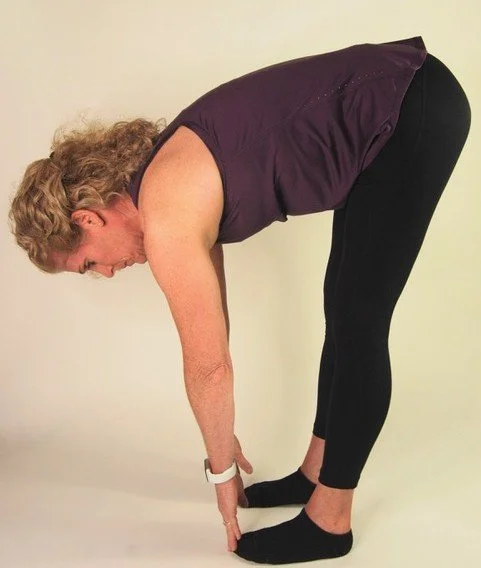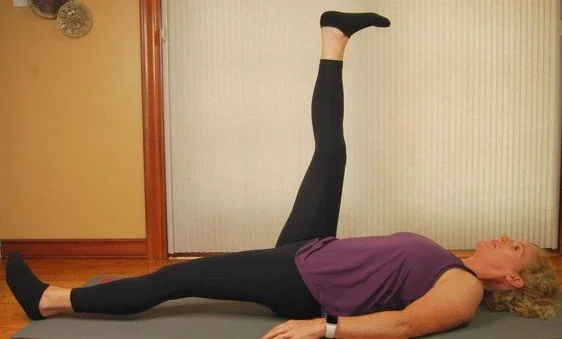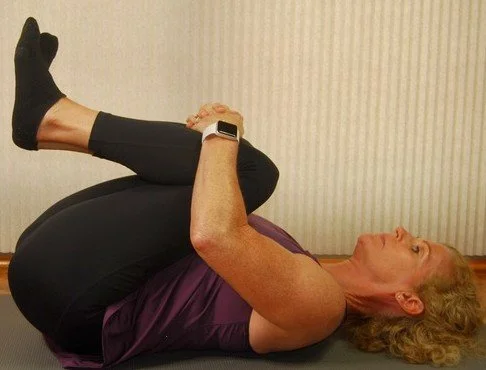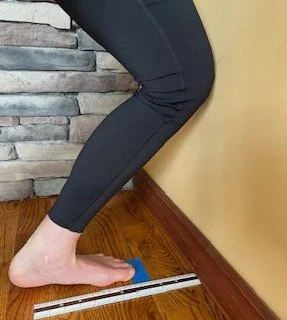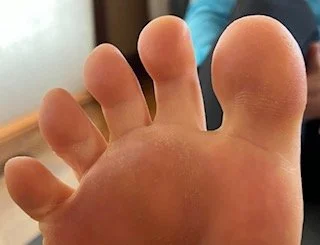Lower Body Mobility and Flexibility - Now That You Know
Continue to increase your knowledge and take control of your body's mobility, healing, and wellbeing.
Leg Mobility & Flexibility
The body moves through coordinated patterns, not solely by isolated muscles or joints. To promote efficiency, the brain relies on repetitive movement patterns for larger, functional motions. These patterns consist of multiple individual movements working together to perform tasks such as picking something up from the floor, squatting, or lifting an object onto a shelf.
For example, if you can raise your leg to 80 degrees while lying down but cannot touch your toes while standing, tight hamstrings may not be the issue. Instead, the problem could be poor motor control, which may involve deficits in stability, balance, postural control, coordination and/or perception. In such cases, the movement pattern is disrupted.
This disruption can stem from various factors such as a sedentary lifestyle where these patterns are rarely used, an old injury that never fully healed, or stiffness caused by surgical trauma or scar tissue. Poor posture or joint tightness from repetitive or prolonged positions can also interfere with the body’s natural movement patterns.
When the body can no longer use its normal movement patterns, it often develops compensatory ones to keep moving. However, these alternative patterns are inefficient and unnatural. Over time, they can cause pain in areas of the body that are not the actual source of the problem.
Try these exercises to improve Leg Mobility & Flexibility:
Avoid stretching your hamstrings by bending down to touch your toes. Typically, if your hamstring muscles are tighter than your lower back muscles, this practice will result in stretching the lower back rather than the hamstring muscles.
A better Standing Hamstring Stretch - step one leg in front of the other, keep front leg straight while bending the back leg at the knee. Place your hands on your hips and rotate your upper body forward of your hips keeping your back straight. Lean backwards to feel a stretch in the hamstring muscles of your front leg.
Doorway Hamstring stretch – Lie on the ground with one leg straight up against the wall and the other leg through the doorway. Move buttock as close to wall as tolerated. Hold for 30 seconds, repeat on opposite side of doorway with other leg.
Supine straight leg raise with ankle pumps – (same as Lower leg mobility assessment) My favorite – To stretch the muscles in the hamstrings and calf and to improve ankle mobility. (Can also be used as a Nerve glide for the lower extremity) Lie on your back and raise one leg up towards the ceiling while keeping the opposite leg touching the floor. Hold a rope, jump robe, etc. placed around the foot that’s in the air. Use the rope to hold up leg and gentle stretch it further towards body as you pump ankle up & down 10 times. Repeat with other leg.
Low Back, Hip & Knee Mobility
If you can bring your knees to your chest but cannot adequately squat this may indicate tightness in the calf muscles and/or stiffness in the ankle joint. Because of this stiffness you may eventually develop tightness, fatigue or even pain in your knees, hips and low back that will eventually limit your ability to bring your knees to your chest. Furthermore, if you have noticed that you no longer squat, you may have developed your own compensation by altering the way you pick up objects by using your back. Excessive bending at the back to lift objects, especially if heavy, may result in increased low back fatigue and pain.
Calf Flexibility and Ankle Mobility
If you have tight calf muscles and/or a stiff or tight ankle this will in turn, make it difficult to lift your foot while walking. The body will develop compensations to allow you to lift your foot to walk so you do not trip over your foot and fall.
Unfortunately, these compensations can lead to dysfunction, pain and ultimately injury to other areas in the body. Some examples:
Shin splints or big toe pain – When ankle stiffness or tight calves limit foot mobility, the muscles in the front of the foot and lower leg must work harder to lift the foot. This added strain can lead to shin splints or pain in the big toe. A telltale sign of big toe over-use is a visible crease across the big toe and wear patterns or indentations at the top of your footwear.
Increased stress to the knee joint – if the ankle cannot adequately move upwards to lift the foot, the knee may shift inward during walking and running to allow the foot to clear the ground placing repetitive stress on the knee and increasing the risk of injury.
Increased stress to the knee joint – if the ankle has limited ability to bend, the knee will collapse inward during squatting increasing the risk of injury especially when lifting heavy weight.
Knee and/or hip fatigue and pain – When ankle movement is restricted, the quadriceps and hip flexor muscles may overcompensate to lift the leg, often resulting in fatigue and discomfort in the knees and hips.
Outer hip and glute fatigue or pain – To clear the foot from the ground, the body may resort to excessive outward movement or rotation at the hip. Over time, this compensation can lead to fatigue or pain in the glutes and outer hips.
Toe Mobility & Flexibility
There may be many reasons for limited toe mobility such as a previous injury, arthritic inflammation, swelling caused by gout, pregnancy, lymphedema, and venous or arterial insufficiency. But if none of these are a factor and you have limited mobility due to your footwear or lack of use, then you may be able to increase your toes and feet mobility and flexibility and prevent future impairments.
Try These Exercises to Improve Foot and Toe Mobility and Flexibility:
Toe mobility: Regularly wiggle, bend, and spread your toes to maintain flexibility.
Toe separation: When washing your feet, gently slide your fingers between your toes to encourage natural spacing.
When resting, utilize toe separators or insert a piece of firm, comfortable material between your toes to assist in realignment.
Toe scrunches: Strengthen the muscles in the toes and feet by stepping on a towel and using your toes to gather up the towel. Make sure to lift your arches as well. I aim for 10 scrunches every morning when stepping out of my shower.
Towel or marble pickup: While keeping your heel on the floor, use your toes to pick up a towel or small objects like marbles.
Barefoot walking: Walk barefoot when you can, especially on sand to strengthen the muscles in the feet and calves.
I have listed a variety of exercises that can be beneficial but are not exhaustive. These exercises should not replace those prescribed by your Health Care Professional. It is advisable to consult your Health Care Provider or a Physical Therapist for more individualized exercises and treatments tailored to your specific needs.
Now That You Know - Check my third set of assessments on Function Strength and Balance to get a better understanding of your body’s
Check my third set of assessments on Senior Function Strength and Balance. These assessments will be a good indicator for an older adult’s ability to remain independent at home and out in the community.
